Leverage with a Decentralized Structure
Trading in perpetual futures contracts is GMX‘s area of expertise, making it a popular decentralized exchange. After its initial launch in late 2021 on the Ethereum Layer 2 network Arbitrum and subsequent deployment to the Avalanche network, the project has swiftly gained interest by providing users with leverage that is up to 30 times greater than their deposited collateral.
In recent years, leverage trading, which refers to the practice of borrowing funds from financial platforms in order to enhance one’s exposure to market changes, has developed into a crucial component of the ecosystem surrounding cryptocurrencies. It enables market participants, among other things, to profit from price declines, to reduce risk in uncertain situations, and to place large bets on an asset when they are convinced of its value.
Leverage can be obtained in crypto through a variety of different means. Customers of centralized exchanges like as Binance and FTX are given the opportunity to borrow funds for the purpose of engaging in trading activities. Customers have the ability to borrow up to 20 times the amount of their initial deposit on both Binance and FTX. DeFi protocols such as Aave and MakerDAO operate in a permissionless manner to offer loans secured by cryptocurrency collateral. More recently, traditional financial companies like GME Group and ProShares have begun providing their institutional clients with access to leveraged products. These products include options on Ethereum futures contracts and Bitcoin Short ETFs.
GMX is unique among these types of businesses in that it is a decentralized exchange that provides services for leverage trading. In this regard, it offers a trading experience comparable to that of other DeFi exchanges such as Uniswap while also providing leverage trading capabilities comparable to those offered by exchanges such as Binance. The maximum leverage that consumers can take use of on GMX for BTC, ETH, AVAX, UNI, and LINK trades is 30x. To put it another way, a trader might borrow up to $30,000 from GMX’s liquidity pool provided they submitted $1,000 worth of collateral with the exchange. We dissect GMX’s product in this guide to determine whether or not it is secure and whether or not you should use it for your next high conviction bet.[rb_related title=”More Read” style=”light” total=”4″]
Participating in trade on the GMX
At the time of this publication, the multi-asset GLP pool that supports trading on the GMX had a value of more than $254 million. Instead of borrowing funds from a single company like many other leveraged trading services, users borrow funds from a liquidity pool that includes BTC, ETH, USDC, DAI, USDT, FRAX, UNI, and LINK. This is in contrast to the majority of other leveraged trading platforms.
On the exchange, users have the option of “going long,” “going short,” or just exchanging tokens with one another. Traders will “go long” on an asset when they anticipate that its value will rise, and they will “go short” when they anticipate that they will be able to “buy back” an asset at a price that is lower than its current price. When making long or short trades on GMX, users have the option of selecting a leverage level with a minimum of 1.1 times the amount of their initial deposit and a maximum level of 30 times.
Chainlink Oracles serve as the platform’s driving force. It does this by utilizing a price feed that is an aggregate of prices from major volume exchanges. This helps to lessen the danger of liquidation that is caused by temporary wicks. A liquidation occurs when a user’s collateral becomes insufficient to maintain a trade; the platform then forcibly closes the position, and the user’s deposit is kept by the platform as compensation for the losses incurred.
GMX will take a snapshot of the dollar worth of the user’s account whenever they open a trade or deposit collateral. Even though the price of the underlying asset may fluctuate during the course of the trade, the value of the collateral will not change at any point.
0.1% of a position’s value is deducted from either the opening or closing balance as the trading charge. Additionally, a variable borrowing cost is collected from the security deposit on an hourly basis. The swap fee is 0.33% of the amount traded. Due to the fact that the protocol itself acts as the counterparty, there is hardly any impact on the price when entering or leaving a trade. According to GMX’s assertions, the level of the liquidity in its trading pool determines whether or not the company can successfully execute large trades exactly at the mark price.
When a user wishes to place a long bet, they have the option of providing collateral in the form of the token they are gambling on. They are compensated with further holdings of the same asset for any gains they earn. When placing a short trade, you can only use GMX’s supported stablecoins as collateral. These are USDC, USDT, DAI, and FRAX. The utilised stablecoin is what is used to pay out profits from short positions.
Token Economics and the Availability of Funding
GMX and GLP are the names of the protocol’s two native tokens respectively.
The GMX coin is used for both utilities and governance. At this time, it may be staked on Arbitrum for an interest rate of 22.95%, while on Avalanche, it may be staked at a rate of 22.79%.
When GMX is locked up, takers have the opportunity to receive three different kinds of rewards: multiplier points, escrowed GMX (also known as esGMX), and either ETH or AVAX. esGMX is a derivative that may be staked or redeemed for GMX over the course of a period of time. On the other hand, multiplier points reward long-term GMX stakers by increasing the interest rate on their holdings. Additionally, 30% of the fees generated through swaps and leverage trading are converted to ETH (on Arbitrum) or AVAX (on Avalanche) and awarded to those who have staked GMX.
A floor price fund is included with the GMX token as well. It is used to ensure that the GLP pool has sufficient liquidity, provide a reliable supply of ETH rewards for staked GMX, and buy and burn GMX tokens in order to maintain a minimum price of GMX against ETH. In addition to being funded by OlympusDAO bonds, the fund increases as a result of fees that are accrued as a result of the GMX/ETH liquidity pair.
At the time of this writing, the total supply of GMX stands at 7,954,166 coins worth more than $328 million, of which 86% have been staked. The entire supply is variable because it is determined by how many esGMX tokens are redeemed, however the development team believes that the supply will not be greater than 13.25 million. After that point, the minting of new GMX tokens will require the consent of the DAO before continuing.
The second token, known as GLP, stands for the index of assets that are employed in the trading pool of the protocol. GLP coins, which can be created using assets from the index like BTC or ETH, and which can be burned in order to redeem those assets, can be redeemed for GLP coins. GLP holders are responsible for providing the liquidity that traders require in order to obtain leverage. This indicates that they take a loss when traders book a profit, and this also indicates that they take a profit when traders book a loss. In addition to this, they are entitled to esGMX awards as well as seventy percent of the fees that are generated by the protocol. Either ETH or AVAX can be used to pay the transaction costs. Tokens issued by the GLP platform are always subject to staking and can never be sold; they can only be redeemed. The interest rate on Arbitrum is currently 25.85%, while the interest rate on Avalanche is 31.38%.
The value of GLP depends on the market value of its underlying assets and the degree of market exposure that GMX consumers have. Notably, when GMX traders short the market, the value of pool assets falls, which is bad news for GLP. But GLP investors can profit from a rise in GMX prices when short sellers drive the price down, a fall in GMX prices when long sellers drive the price up, and a rise in GMX prices when long sellers drive the price up.
Finally, some thoughts
It’s easy to learn how to utilize GMX. Trading feels effortless, and the system delivers comprehensive data. Finding the collateral size, leverage amount, entry price, liquidation price, fees, available liquidity, slippage, spread, and PnL when opening or closing a transaction is simple (profits and losses). The protocol’s user interface provides a plethora of data on its AUM, trading volumes, fees, and traders’ holdings. In addition to providing information on the current market value of GMX and GLP, the website also features information about the project’s partnerships, integrations, and related community projects. There’s also a documentation page, where you can read up on the various parts of the exchange and get some ideas on how to connect to Arbitrum or Avalanche or how to get some GMX or GLP tokens. In part because of its transparent dashboards, GMX has gained a positive reputation. Therefore, the protocol’s mechanisms are straightforward.
GMX combines the best of decentralized and centralized exchanges with its permissionless accessibility and leveraged trading offering, demonstrating that DeFi protocols are always pushing the boundaries of what is possible. Over the past two months, trade volume for the protocol has more than quadrupled, moving from $90 million to $150 million per day. This rise in popularity is likely due to the increasing number of crypto natives who are entering the market. Due to its immaturity, GMX is now best suited for small retail traders rather than institutional ones. Nevertheless, GMX may soon draw the institutional sector, thanks to its quick expansion in recent months and the fact that more major businesses are beginning to experiment with DeFi. It’s important to keep an eye on because there’s still opportunity for expansion.[rb_related title=”More Read” style=”light” total=”4″]
Decentral Media, Inc. makes no claim or warranty as to the timeliness, completeness, or accuracy of any material on or accessed through this website, even though such information is collected from independent sources we believe to be accurate and reliable. You should not consider Decentralized Media, Inc. a financial adviser. Please note that we do not offer individual consultations on matters of finance or investment. You should assume that everything you read on this website could change at any time. It is possible that any or all of the content on this website will become irrelevant, incomplete, or incorrect over time. We reserve the right, but have no obligation, to correct any out-of-date, incomplete, or incorrect details.
Nothing on this site should be construed as investing advice, and you should not use it to make a judgment about participating in an initial coin offering (ICO) or any other type of investment. If you are looking for investment advice on an initial coin offering (ICO), initial exchange offering (IEO), or other investment, you should speak with a licensed investment advisor or other certified financial professional. We do not take any kind of payment for our reviews or coverage of any initial coin offering (ICO), initial exchange offering (IEO), cryptocurrency, currency, tokenized sales, stocks, or commodities.


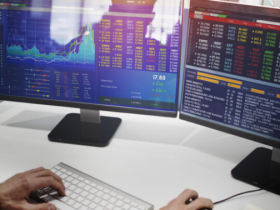


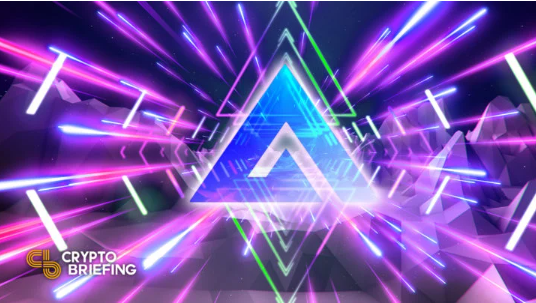
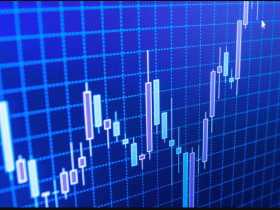
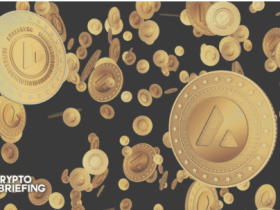


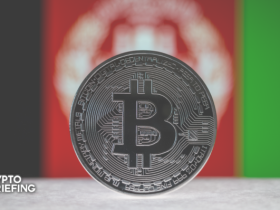
Leave a Reply